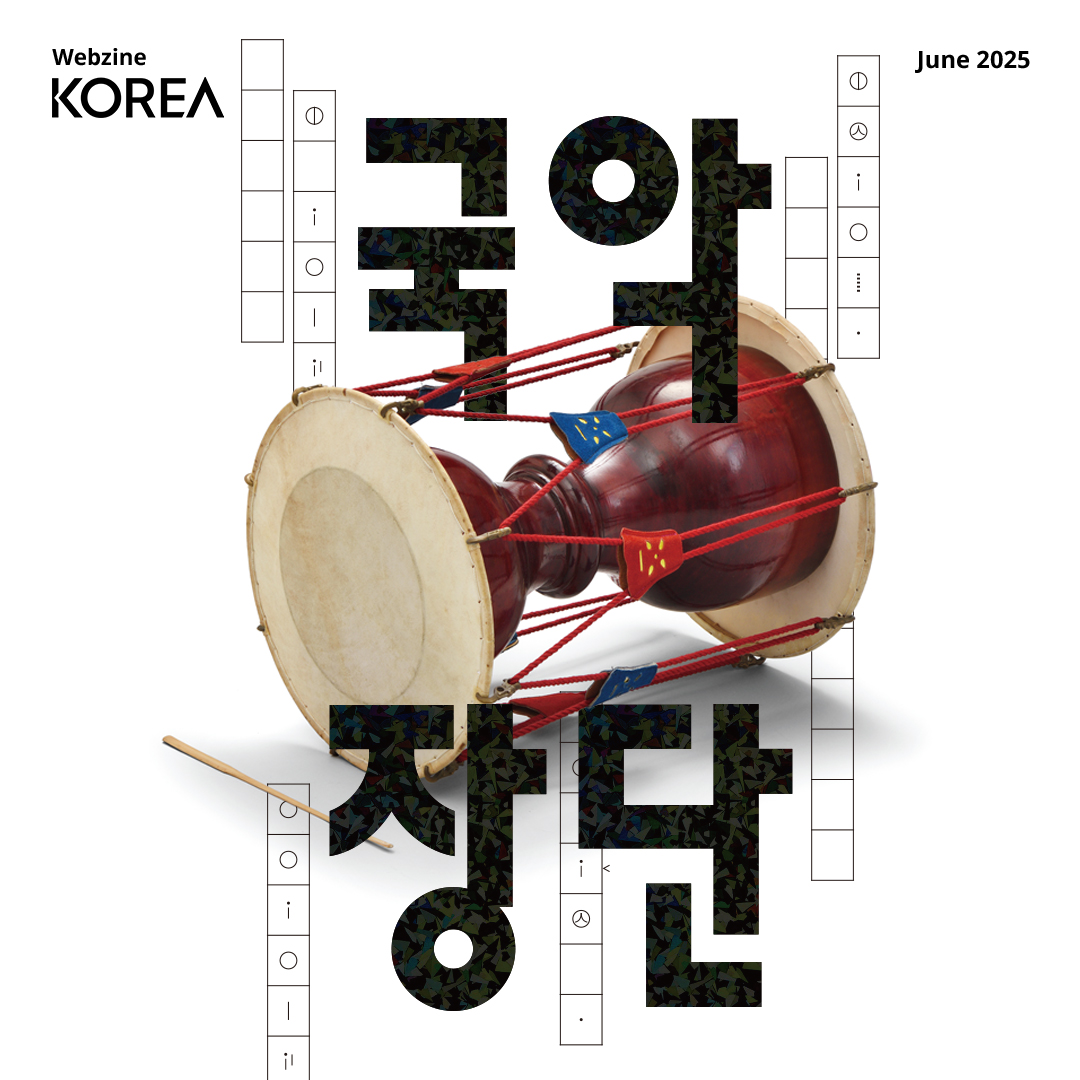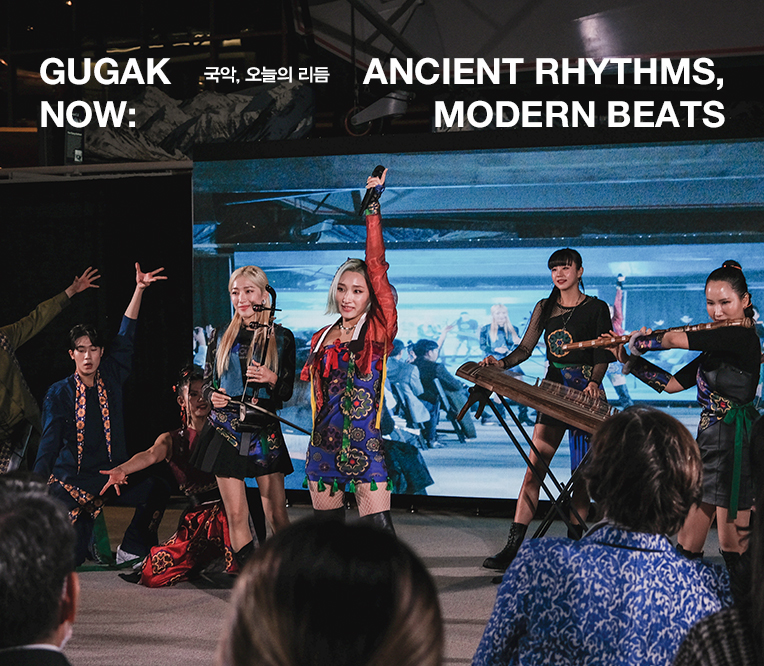Program
KOREA WEBZINE June 2025
- Post Date2025-06-02
- Hits219 Hit

KOREA WEBZINE June 2025
Gugak × Jangdan
The “국악” (gugak) on the cover refers to Korea’s traditional music. “장단” (jangdan) consists of ten asymmetrical rhythms combining elements such as beats, tempo and dynamics—a crucial concept that differentiates gugak from Western music, which has fewer rhythms and is more symmetrical. The square-shaped musical notation displayed alongside is jeongganbo, created by King Sejong the Great during the Joseon Dynasty and still in use today. The image on the cover is a janggu (hourglass-shaped drum) provided by the National Gugak Center. By placing these distinctive elements and terms on the cover, we aimed to emphasize the unique originality of gugak.
Gugak
Gugak, Korea’s traditional music, captures a uniquely Korean sensibility by blending its history, emotions and musical elements. This distinct charm underpins K-culture. For an authentically Korean experience, gugak remains the most essential cultural expression.
Cover Story 1
Gugak:
Breaking Boundaries and Redefining Tradition
국악은 확장한다
Korean traditional music, or gugak, is not confined to the past but continues to expand. It preserves essential values while simultaneously incorporating new elements.
Cover Story 2
A Great Time for Some Gugak
지금 바로 국악
The traditional sounds of gugak are still being made today. Read on for some tips about how to encounter gugak both online and off. Take this opportunity to dive into the joys of traditional Korean music.

Cover Story 3
Gugak Now:
Ancient Rhythms, Modern Beats
국악, 오늘의 리듬
Korean music, with its unique resonance, has transformed in many ways with the times while firmly preserving its distinctive elements like deep emotion and unique scales.
